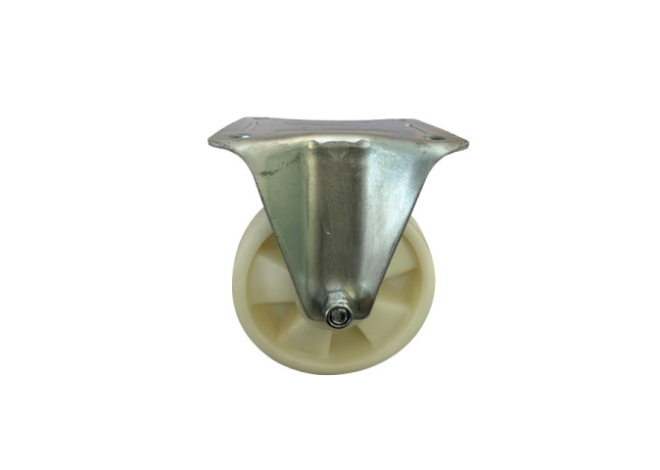
How Dental Microsurgery Enhances Precision in Root Canal Treatments
Introduction
Dental microsurgery has revolutionized the way root canal treatments (endodontic therapy) are performed, making the procedure more precise, effective, and less invasive. Traditional root canal treatments often relied on the dentist’s skill and traditional tools, but advances in technology, particularly the use of dental microscopes, have greatly enhanced the outcomes for patients. In this article, we’ll explore how dental microsurgery enhances precision in root canal treatments, its benefits, and what it means for both dental professionals and patients.
Definition
Dental microsurgery is a specialized field of dentistry that involves the use of high-powered microscopes and precision instruments to perform intricate dental procedures with enhanced accuracy. This technique allows dentists to magnify the treatment area, enabling them to work on minute details that are not visible to the naked eye, such as tiny root canals or micro-cracks in the teeth. Dental microsurgery is commonly used in endodontic treatments like root canals, as well as in periodontal and restorative procedures, offering benefits like improved precision, reduced tissue damage, and better patient outcomes.
What is Dental Microsurgery?
Dental microsurgery refers to the use of advanced optical technology and microsurgical instruments to perform dental procedures with exceptional accuracy. Microsurgery is not limited to endodontic treatments but has broad applications in restorative and periodontal dental care. By using a dental operating microscope (DOM), dentists can visualize fine details of the tooth structure that are otherwise invisible to the naked eye. This enhanced visibility allows for more accurate diagnoses and treatments, which is especially crucial for complex root canal procedures.
Understanding Root Canal Treatments
A tooth that is severely decaying or diseased may be saved with a root canal therapy. After cleaning the inside of the tooth and extracting the infected pulp, the tooth is sealed to stop further infection. Traditionally, this was done with standard dental tools and X-rays for guidance. While effective, these methods had limitations in detecting very small or complex anatomy inside the root canal, leading to potential complications or the need for retreatment. Dental microsurgery, with its enhanced visibility, allows for a much higher degree of accuracy in identifying and treating infected areas within the tooth.
How Dental Microsurgery Enhances Precision in Root Canal Treatments
The use of dental microscopes and microsurgical tools during root canal treatments offers several key advantages that significantly improve the precision of the procedure. Here are some of the ways dental microsurgery enhances precision:
Magnification and Enhanced Visualization:
- Clearer view of anatomy: Dental microscopes can magnify the treatment area up to 25 times, offering unparalleled clarity in viewing the intricate root canal system.
- Detection of fine details: The magnification allows the dentist to detect tiny root canals, hidden cracks, or micro-fractures that are often missed in traditional root canal treatments.
- Improved light source: Dental microscopes come equipped with powerful LED or xenon lights, ensuring that even the deepest parts of the tooth are clearly illuminated.
Better Detection of Complex Anatomy:
- Locating hidden canals: Some teeth, particularly molars, have complex root structures with multiple canals that can be difficult to locate. Dental microscopes allow dentists to identify these hidden canals, ensuring that all infected areas are treated.
- Navigating curved canals: Root canals can sometimes curve, making it challenging to clean them thoroughly. With enhanced visibility, dentists can better navigate curved canals and treat the entire root system.
Minimally Invasive Techniques:
- Smaller incisions: Microsurgery enables dentists to work with smaller, more precise instruments, leading to smaller incisions and less trauma to surrounding tissues.
- Conservative tooth structure removal: Instead of removing large amounts of tooth structure to access the root canals, microsurgery allows for a more conservative approach, preserving as much of the natural tooth as possible.
Improved Treatment Accuracy:
- Precision in cleaning and shaping canals: The enhanced visualization provided by the microscope helps ensure that the cleaning and shaping of the root canals are more accurate, reducing the chances of missed infection or treatment failure.
- Effective sealing of the root canal: Microsurgery tools enable more precise placement of the filling materials used to seal the root canal, ensuring a better long-term prognosis.
Increased Success Rates:
- Lower chances of retreatment: With improved precision, the success rates of root canal treatments are higher, and the need for retreatments is significantly reduced.
- Better detection of problems: Any complications, such as missed canals, fractures, or reinfections, are easier to detect and address during the procedure, increasing the overall effectiveness of the treatment.
Benefits of Dental Microsurgery for Patients
For patients, the precision offered by dental microsurgery translates into numerous benefits that enhance the overall treatment experience.
Faster Recovery Time:
The minimally invasive nature of microsurgery leads to less damage to surrounding tissues, which means patients can recover more quickly and experience less post-operative discomfort.
Reduced Pain and Swelling:
With fewer and smaller incisions, patients experience less pain and swelling after the procedure, contributing to a more comfortable recovery.
Better Long-Term Outcomes:
By ensuring that the root canals are thoroughly cleaned and sealed, dental microsurgery reduces the likelihood of future infections, offering better long-term outcomes and reducing the need for retreatments or tooth extractions.
Enhanced Aesthetics:
Because dental microsurgery preserves more of the natural tooth structure, patients often achieve better cosmetic results. The integrity of the tooth is maintained, and any restoration work is more durable and aesthetically pleasing.
Increased Confidence in Treatment:
Patients can feel more confident knowing that their dentist is using the latest technology to provide precise, high-quality care. The detailed diagnosis and improved accuracy of treatment give patients peace of mind.
Benefits of Dental Microsurgery for Dentists
The advantages of dental microsurgery are not limited to patients; dentists also benefit from the increased precision and control provided by advanced technology.
Enhanced Diagnostic Capabilities:
The high magnification offered by the microscope allows dentists to make more accurate diagnoses, ensuring that no hidden issues go untreated.
Improved Ergonomics:
Dental microscopes allow dentists to work in a more comfortable and ergonomic position, reducing the strain on their bodies during long procedures. This also helps improve focus and precision.
Reduced Risk of Complications:
With better visibility and precision, the risk of complications such as perforation or incomplete cleaning is significantly reduced, improving the overall success rate of the procedure.
Increased Professional Satisfaction:
Using advanced technology to deliver high-quality care enhances the dentist’s professional satisfaction and reputation. The success of complex cases becomes more achievable, leading to better patient outcomes.
Growth Rate of Dental Microsurgery Market
The market for dental microsurgery is anticipated to expand between 2021 and 2028. From 2021 to 2028, the market is expected to develop at a compound annual growth rate (CAGR) of 7.99%, according to Data Bridge Market Research’s analysis.
Read More: https://www.databridgemarketresearch.com/reports/global-dental-microsurgery-market
Conclusion
Dental microsurgery has transformed the landscape of root canal treatments by enhancing precision, improving patient outcomes, and making the procedure more efficient. The use of dental microscopes, microsurgical instruments, and advanced techniques enables dentists to detect and treat even the most complex root canal systems with greater accuracy. For patients, this means faster recovery times, less pain, and better long-term dental health. For dentists, it means improved diagnostic capabilities, reduced complications, and increased treatment success rates.


